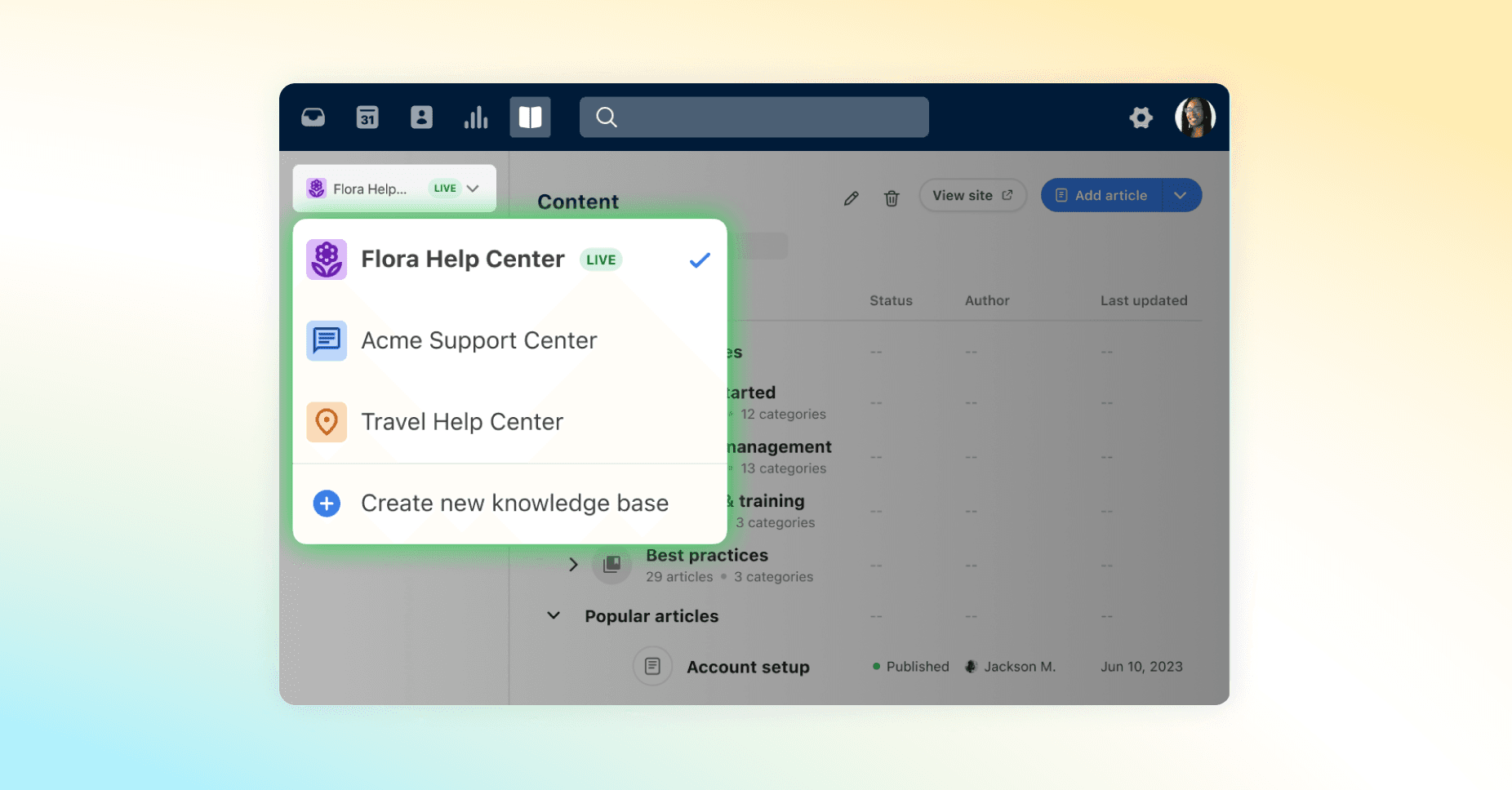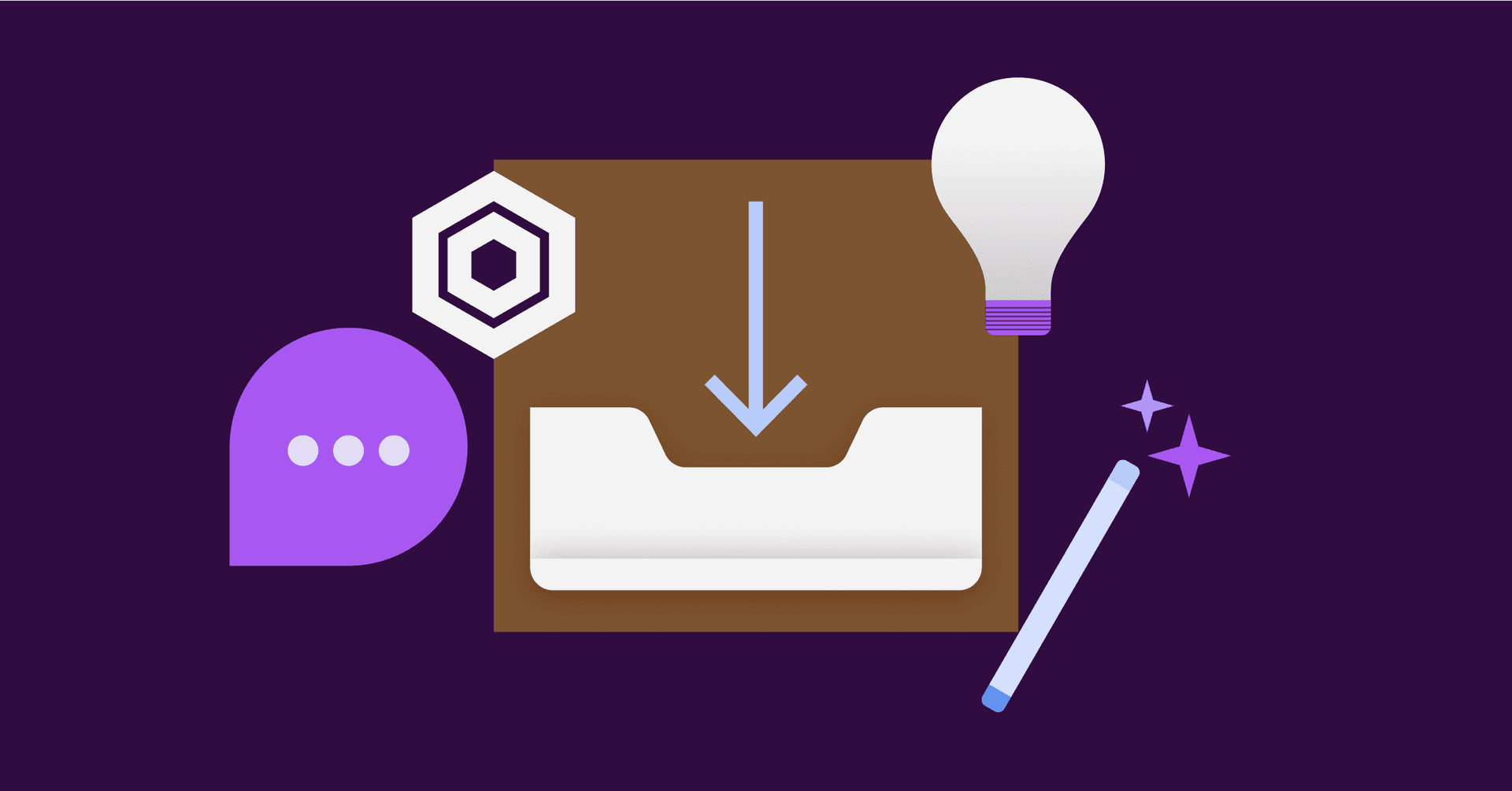Since its inception, email has become an indispensable tool, changing the way we communicate. But, the convenience email has provided has also led to some challenges. Cluttered inboxes, missed messages, and inefficient workflows have become all too common, posing a threat to team productivity, especially for customer service teams who rely heavily on email.
In a world where responsiveness and attentiveness are everything, the ability to effectively manage customer email with email management software has become critical for businesses to succeed. This article will provide actionable strategies for superior email management, empowering your team to regain control of the inbox and deliver exceptional customer service.
What is email management?
Email management is the process of organizing, prioritizing, and responding to emails efficiently. Effective management of email functionality means handling all incoming messages, maintaining an organized inbox, and ensuring timely responses. This is crucial for optimal productivity, maintaining professional communication with peers, clients, and partners, and boosting customer support.
It’s possible to streamline email management with processes, prioritization, and automation. And it’s worth your time to think about ways to streamline — by mastering customer email management, you improve time management, enhance collaboration, and allow your team to do more with less. The easier you make basic email management, the more time teammates will have back for more pressing and important tasks.
Key components of effective email management
While email remains a ubiquitous communication channel, the ability to handle inquiries, requests, and conversations with efficiency and care can set your business apart.
Beyond basic inbox organization functionality, a few key components can shift basic email management from mundane to masterful:
Organization: Organization is the foundation of strong email management, including utilizing folders, labels, and filters to sort and triage incoming messages for maximum clarity.
Prioritization: Identifying high-priority items allows you to address the most pressing needs first.
Automation: Through automating templates and rules, the team saves time on repetitive responses, freeing you to focus on more complex queries. Workflow automation is especially critical for teams looking to enhance their customer support and stand out in the crowd for exceptional service.
Collaboration: Collaboration tools takes email management functionality to the next level, enabling teams to share inboxes and distribute responsibilities. This improves response and builds consistent, quality interactions with customers.
Integration: Integrating email with other productivity tools helps you keep everything in one centralized, organized place.
6 tips for superior email management
TIP ONE: Centralize communication channels
Teams might be handling a handful or even dozens of email addresses (support@, contact@, orders@, etc.), or a different email account address for every office or client. In addition, customers now like to communicate via chat, social media, and other digital channels. It’s important to centralize all of those channels in one place.
By consolidating all customer communications in a single, email-centric hub, or an omnichannel inbox, you streamline workflows and ensure nothing gets missed.
Front’s omnichannel inbox consolidates all communication channels into a centralized platform, enabling teams to access and respond to messages from any channel. No more juggling of multiple tools and inboxes. Its intuitive interface and robust collaboration features make it simple for teams to work together, assign tasks, and maintain a consistent brand voice across all touch points.
TIP TWO: Use shared inboxes for team collaboration
Shared inbox email management software allows multiple team members to access, view, and respond to messages. This level of collaboration and accountability is especially crucial for teams working directly with customers, where timely and personalized interactions make all the difference. By centralizing all emails in one place, you can ensure prompt and consistent responses and boost team transparency.
To maximize the benefits of a shared inbox, first, establish clear team roles and responsibilities. Assign specific team members to handle certain types of inquiries or clients, and utilize internal comments and mentions to streamline communication.
Email management software tools like Front make it easy to manage a shared inbox, with features that facilitate collaborative email management and provide valuable insights into team performance. With Front, users can hand off past conversations and customer context in one place, easily get feedback with auto-shared drafts, and add in-thread comments to replace extra internal emails or DMs.
Shared inboxes are built to keep teams in lockstep and give your team the collaboration superpowers it needs to take customer experience to the next level.
Front’s intuitive and simple design enabled more efficient cross-functional team collaboration and less switching across apps like Slack, saving 1+ hours per team member on Front. This saved $211,250 in productivity to deliver a more consistent customer experience.
TIP THREE: Automate and organize with tags and filters
Leveraging automation and using tags and filters helps shared email inboxes stay organized. By setting up simple rules, you can save countless hours and rest assured no important emails will slip by.
Imagine how much time you’d save if your inbox automatically sorted messages, sent templated responses, and scheduled follow-ups. Email automation does the manual work for your team, eliminates manual errors, provides consistency, and frees up time to focus on higher-value work.
To implement automation in your inbox, begin by configuring tagging and filtering options within your email management software, or Gmail or Outlook email inbox. Create labels for different projects, senders, or task types, and then set up rules to automatically sort incoming email notifications. By leveraging tools like Front, you can discover powerful automation workflows that enable enhanced efficiency.
Key Front workflow automation features include:
Tags, which help you prioritize what should come next and lay the groundwork for automated rules
Seamless escalations and handoffs based on keywords, priority, customer data, and more
Consistency across office shifts — if you’re OOO, redirect messages and a team member will have your back
Data sync from other systems in your workflows, like account data from your CRM
Front has us follow up with messages automatically tagged as urgent if no one has replied. We also use keyword rules to tag based on different kinds of requests we receive. Now, we can use analytics to report on trends long-term, giving us visibility we never had in Outlook.
TIP FOUR: Enhance response efficiency with templates and AI
With the right message email templates and AI tools, your customer service team can engage clients with confidence and clarity.
Pre-approved, on-brand message email templates help create consistency across all customer touch points. They act as a guiding framework, allowing your team to quickly respond to inquiries with pre-approved copy and handle objections faster, all while delivering a holistic brand experience.
Invest the time upfront with your team and dedicated stakeholders to develop a comprehensive library of message templates.

ebook: 5 support message templates to improve your team’s CSAT
Customer service message templates are an essential tool for achieving exceptional service at scale by ensuring your team’s responses are consistent, fast, and accurate. Are you using the right ones? 💡
AI tools can also be used to suggest and automate responses in your email inbox. Gmail’s Smart Reply, for example, suggests brief, appropriate responses to messages that users can send with just a click. This streamlines communication and ensures a uniform brand voice.
Front’s AI Compose feature builds AI-generated drafts based on any text you’ve already provided as well as any previous messages in the conversation. You can choose from various tones and languages to match your team’s needs and preferences.
TIP FIVE: Monitor and analyze email performance
Leveraging data to guide your team’s email management strategy is essential. By tracking key metrics, you can make data-driven decisions to improve team response times, resolution times, and overall customer satisfaction.
Response time measures how quickly your team acknowledges and replies to incoming email notifications, while resolution time tracks how long it takes to fully address and close out a customer inquiry. Customer satisfaction metrics provide valuable insight into how well your team is meeting the needs of your audience.
Email management software like Outlook and Gmail can provide basic insights into email performance. For more advanced tracking and custom dashboards, consider investing in a dedicated modern email management platform. Front analytics allows you to know exactly what to improve — see workload analytics, SLA attainment, response times, CSAT scores, and customer feedback all in one place. Front’s analytics tools also allow your team to see a granular breakdown of team productivity – enabling leaders to up skill teams to peak performance, recognize top performers, and steer team meetings for process improvement. Exporting Front data and combining it with other sources enables teams to gain a full understanding of the customer experience they provide.
Our management team uses Front’s analytics to actively see how we are progressing towards our business goals, and get better insight into individual performance and see who needs help. Since starting with Front, we have increased efficiency to respond 2.5x faster to customers.
TIP SIX: Integrate with existing tools
Effective email management becomes exponentially more powerful when integrated with your other essential software. By connecting your email management software with tools like your CRM, project management software, and team collaboration platforms, you streamline workflows and improve cross-functional visibility.
For example, with Salesforce, contact sync or access customer data in the inbox. With Trello, you can link Trello tasks to emails to track action items related to the email. Platforms like Zapier allow you to automate workflows between hundreds of apps with just a few clicks.
Tools like Front offer customer service teams 110+ native integrations that let teams connect their inbox to the tools they rely on every day — including Slack, Shopify, WhatsApp, Dialpad, and more. By connecting your favorite project management tool, like Asana or Jira, you can handle all of your tasks without leaving Front. Bring account and contact data from Salesforce, HubSpot, or Dynamics 365 into Front to power automation and tailor message templates.

We had teams working with different tools that were not integrated with each other. We realized there were a lot of repetitive tasks that could be streamlined or completely automated. Through Front we could optimize collaboration between teams, saving 3,500 hours a month.
Transform your inbox from chaotic burden to powerful asset
Mastering the key components of effective email management is the gateway to delivering the kind of customer experience that keeps clients coming back.
With modern customer service platforms like Front, taming your inbox management is easy. Front provides your team with all of the tools, features, and integrations needed to make exceptional customer service with email happen.
Written by Sara Shaughnessy
Originally Published: 2 January 2024











